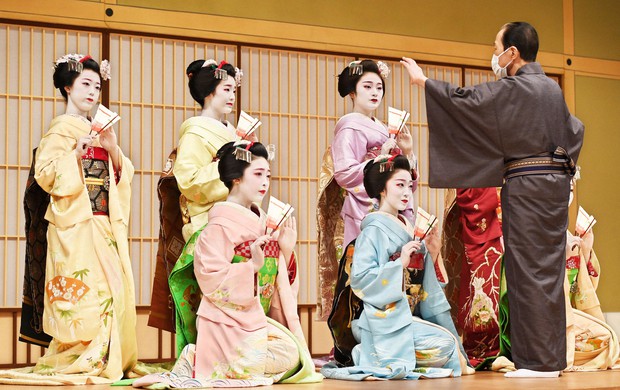Kyoto is one of the most beautiful and captivating cities in Japan. It’s full of traditional architecture, historical sites, and a rich cultural tapestry that is unlike any other city in the world. But perhaps one of the most iconic images associated with Kyoto is that of the maiko (apprentice geisha). These young women are trained in music, dance, calligraphy, and other artistic skills to entertain guests at formal events. As a visitor to Kyoto, it’s an unforgettable experience to see the maiko perform their traditional dances and songs or wander through Gion’s narrow streets as they make their way from one engagement to another. While it’s important to respect their privacy and not interfere with their work, taking in the sight of Maiko on your visit will be an experience you won’t soon forget.
Maiko
Around 15-year-olds start training as maiko, and 20-year-olds advance to the post of geiko; thus, youth and “innocence” are important signs of status. They place a premium on these characteristics, which are reflected in their clothing; in comparison to the more subdued geiko, their appearance is more carefree and colorful. They wear their own hair, which is often decorated with numerous colorful hairpins, and wear vividly colored, longer-sleeved kimonos with obi (sashes) that are left long in the back. Maiko may also choose to expose more skin just below the hairline of their necks and wear higher wooden sandals.
Geiko/Geisha
A geiko, on the other hand, would be more likely to be seen in a more subdued kimono with shorter sleeves, flatter sandals, and a wig with fewer hair embellishments. Seeing a maiko may not be as exciting as seeing a geiko, but sometimes they are more attractive to photograph.
If you’ve already visited Kyoto, then head to Kanazawa, a little city in Japan known for its gold and geisha, with its own tea districts and legendary geisha evenings.
Geisha, Geiko, and Maiko: The Differences
While the name “geisha” is more commonly used in Tokyo, in Kyoto the proper term is “geiko,” which literally means “women of art” and implies more extensive and rigorous training than their Kanto counterparts. Every aspect of a geiko’s life, from flower arranging to conversation to traditional dance to parlor games, requires at least five years of instruction as a maiko (an apprentice geiko) and ongoing study throughout a geiko’s career. It is estimated that there are currently roughly one hundred fully-fledged geiko and a similar number of maiko in Kyoto, who are employed to offer entertainment at banquets and parties and are held in high regard.
You can find out more here about the differences.
The Netflix drama “The Makanai: Cooking for the Maiko House”
Netflix’s drama “The Makanai: Cooking for the Maiko House” is a unique look into the fascinating culture of maiko in Kyoto. It follows the story of a young apprentice cook as she embarks on her journey to become a makanai chef in the powerful world of Maiko. What is makanai? Makanai refers to meal cooked not for customers but for employees, in this case it refers to the meal prepared for maiko living in the maiko house and it also refers to the chef who cook such makanai meals.
The series showcases how these young women, known as maiko, are groomed and trained to become traditional Japanese entertainers through rigorous practice and dedication. We get to see their daily lives, their struggles, and their successes as they strive for perfection. It is an eye-opening look at an ancient tradition that still continues today in Kyoto.





1 thought on “Maiko-Young Apprentice of Gaisha in Kyoto”
Comments are closed.